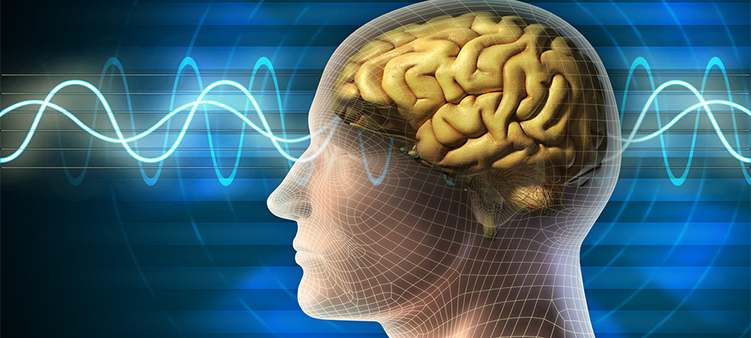Parkinson's Disease Overview
Parkinson's disease, which mostly affects older
people but can occur at any age, results from the gradual degeneration of
nerve cells in the portion of the midbrain that controls body movements. The
first signs are likely to be barely noticeable -- a feeling of weakness or
stiffness in one limb, perhaps, or a fine trembling of one hand when it is
at rest. Eventually, the shaking worsens and spreads, muscles tend to
stiffen, and balance and coordination deteriorate. Depression, cognitive
issues, and other mental or emotional problems are common as well.
Parkinson's disease usually begins between the ages of 50 and 65, striking
about 1% of the population in that age group; it is slightly more common in
men than in women. Medication can treat its symptoms, and the disorder is
not directly life-threatening.
-
What Causes Parkinson's Disease?
Body movements are regulated by a portion of the brain called the basal
ganglia, whose cells require a proper balance of two substances called
dopamine and acetylcholine, both involved in the transmission of nerve
impulses. In Parkinson's, cells that produce dopamine begin to degenerate,
throwing off the balance of these two neurotransmitters. Researchers believe
that genetics sometimes plays a role in this cellular breakdown. In rare
instances, Parkinson's disease may be caused by a viral infection or by
exposure to environmental toxins such as pesticides, carbon monoxide, or the
metal manganese. But in the great majority of Parkinson's cases, the cause
is unknown.
Parkinson's disease is a form of parkinsonism. This is a more general term
used to refer to the set of symptoms that is commonly associated with
Parkinson's disease but sometimes stems from other causes. The distinction
is important because these other causes of parkinsonism may be treatable,
while others do not respond to treatment or medication. Other causes of
parkinsonism include:
* An adverse reaction to prescription
drugs.
* Use of illegal drugs.
* Exposure to environmental toxins.
* Stroke.
* Thyroid and parathyroid disorders.
* Repeated head trauma (for example, the
trauma associated with boxing).
* Brain tumor.
* An excess of fluid around the brain (called
hydrocephalus).
* Brain inflammation (encephalitis) resulting
from infection.
-
The Stages of Parkinson's Disease
Parkinson's disease strikes people in many different ways, leaving them to
experience a broad range of symptoms. Though symptoms may be mild or severe
or occur frequently or infrequently, Parkinson's disease appears to have
five different stages. The time spent at each stage varies, and the skipping
of stages, from stage one to stage three, for example, is not
uncommon.
Parkinson's disease stages include:
Stage one:
During this initial phase of the disease, a patient usually
experiences mild symptoms. These symptoms may inconvenience the day-to-day
tasks the patient would otherwise complete with ease. Typically these
symptoms will include the presence of tremors or experiencing shaking in one
of the limbs.Also during stage one, friends and family can usually detect
changes in the Parkinson's patient including poor posture, loss of balance,
and abnormal facial expressions.
Stage two:
In the second stage of Parkinson's disease, the patients symptoms
are bilateral, affecting both limbs and both sides of the body. The patient
usually encounters problems walking or maintaining balance, and the
inability to complete normal physical tasks becomes more apparent.
Stage three:
Stage three symptoms of Parkinson's disease can be rather severe
and include the inability to walk straight or to stand. There is a
noticeable slowing of physical movements in stage three.
Stage four:
This stage of the disease is accompanied by severe symptoms of
Parkinson's. Walking may still occur, but it is often limited and rigidity
and bradykinesia are often visible. During this stage, most patients are
unable to complete day-to-day tasks, and usually cannot live on their own.
The tremors or shakiness that take over during the earlier stages however,
may lessen or become non-existent for unknown reasons during this
time.
Stage five:
The last or final stage of Parkinson's disease usually takes over
the patients physical movements. The patient is usually unable to take care
of himself or herself and may not be able to stand or walk during this
stage. A patient at stage five usually requires constant one-on-one nursing
care.
-
Understanding Parkinson's Symptoms
Parkinson's disease is a movement disorder that progresses slowly. Some
people will first notice a sense of weakness, difficulty walking, and stiff
muscles. Others may notice a tremor of the head or hands. Parkinson's is a
progressive disorder and the symptoms gradually worsen. The general symptoms
of Parkinson's disease include:
* Slowness of voluntary movements, especially
in the initiation of such movements as walking or rolling over in bed.
* Decreased facial expression, monotonous
speech, and decreased eye blinking.
* A shuffling gait with poor arm swing and
stooped posture.
* Unsteady balance; difficulty rising from a
sitting position.
* Continuous "pill-rolling" motion of the
thumb and forefinger.
* Abnormal tone or stiffness in the trunk and
extremities.
* Swallowing problems in later stages.
